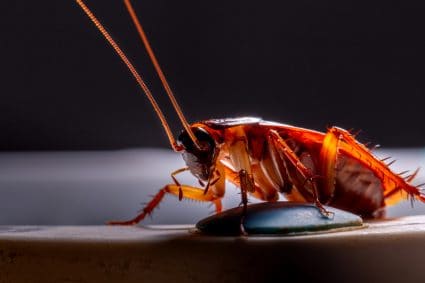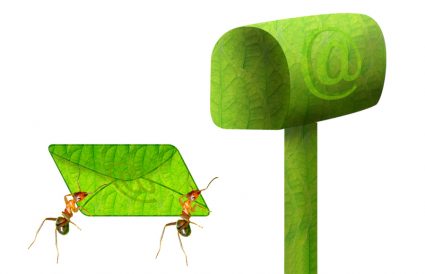
Silverfish, scientifically known as Lepisma Saccharina, are small, wingless insects characterized by their flattened, carrot-shaped body and a silvery sheen. They are attracted to warm, dark places with high humidity, which is why they are often found in bathrooms, basements, and attics. But how exactly do these pests find their way into your home? This comprehensive guide will delve into the various entry points that silverfish use, the conditions that attract them, and the best prevention and elimination methods to keep them at bay.
Silverfish can enter your house through various entry points such as unsealed pipes and faucets, cracks and voids in the foundation, windows, and doors, gaps in the soffit, or they can be carried inside on boxes or bags. They are attracted to warm, dark places with high humidity and have access to food sources like carbohydrates and proteins. To prevent them, seal all potential entry points, reduce humidity in your home, and keep food in sealed containers.
Characteristics of Silverfish
Before we explore how silverfish get into your house, let’s understand what they are and their characteristics. Silverfish, with their teardrop-shaped bodies that measure up to ½ inch in length, move in a wiggling motion that resembles a fish. They are nocturnal creatures with a preference for starchy materials and items high in protein. This means they can cause damage to items like wallpaper, books, and clothing, particularly silks and cotton. While they are not harmful to humans or pets, their remains, such as shed skin, can cause allergies in some people.
Entry Points for Silverfish
Silverfish can enter your home through various entry points. Here are some common ones:
- Unsealed Pipes and Faucets: Silverfish are attracted to areas with heavy moisture, so unsealed pipes and faucets are a common entry point.
- Cracks and Voids: They can squeeze through cracks and voids in the foundation, windows, and doors.
- Gaps in the Soffit: Silverfish can climb walls and may enter directly into the attic through gaps in the soffit.
- Carried Inside on Boxes or Bags: You may accidentally bring silverfish inside on boxes or bags.
To prevent silverfish from entering your home, ensure all pipes and faucets are not leaking and that seals are intact. Use caulk to seal any cracks or crevices, keep debris and junk from accumulating, and reduce humidity in your home by using a dehumidifier or fixing leaky pipes.
Conditions that Attract Silverfish
Silverfish thrive in specific conditions, including:
- High Humidity: Silverfish need high levels of humidity (above 75 percent) to survive.
- Warm, Dark Places: They prefer environments with consistent temperatures between 70 to 80 degrees Fahrenheit.
- Access to Food Sources: Silverfish feed on carbohydrates and proteins, which are commonly found in homes.
- Moisture Issues: Silverfish are often found in homes with moisture problems, such as leaky pipes or water damage.
To make your house less attractive to silverfish, reduce humidity levels, fix any water leaks, keep food in sealed containers, and clean regularly.
Signs of a Silverfish Infestation
Common signs of a silverfish infestation include:
- Silverfish sightings
- Fecal matter
- Shed skin
- Yellow stains or dust
- Holes and damage to wallpaper, books, and clothing.
How to Eliminate a Silverfish Infestation
There are several ways to eliminate a silverfish infestation, ranging from homemade traps to professional pest control services. Consider using natural repellents like cedar, citrus fruits, cinnamon, and lavender, or sprinkle diatomaceous earth in areas where silverfish are present.
If the infestation is severe or persistent, consider hiring a professional pest control service to assess the situation and provide a tailored treatment plan.
Conclusion
Silverfish can be a nuisance, damaging your belongings and creating an uncomfortable living environment. Understanding how they enter your home and the conditions that attract them can help you prevent an infestation. Regular home maintenance, proper food storage, and reducing humidity can go a long way in keeping your home silverfish-free. If you’re dealing with a persistent infestation, don’t hesitate to seek professional help.
Frequently Asked Questions
What is the lifespan of a silverfish?
Silverfish can live for a long time compared to other insects. Their lifespan varies from two to eight years.
Can silverfish bite humans?
No, silverfish do not bite humans. They are not harmful to humans or pets, but can cause damage to personal belongings.
Do silverfish multiply quickly?
Silverfish can reproduce quickly once they find a suitable environment. A female silverfish can lay up to 20 eggs per day, and these eggs can hatch in as little as 19 to 43 days.
Are silverfish attracted to light?
No, silverfish are nocturnal and are more active in dark conditions. They are not attracted to light and will often run away from it.
Can silverfish survive in dry environments?
Silverfish prefer humid environments and struggle to survive in dry conditions. If the humidity level drops below 50%, it can be lethal for them.










